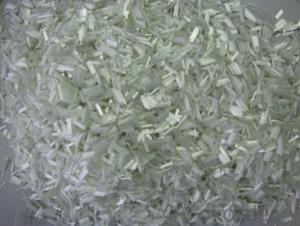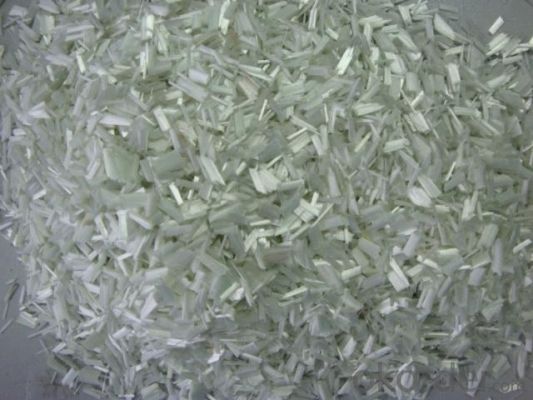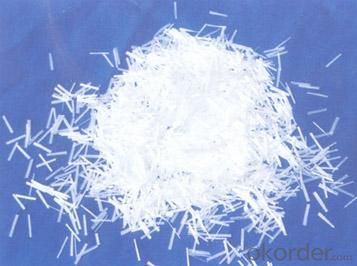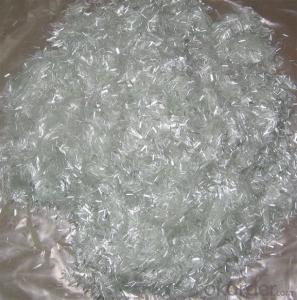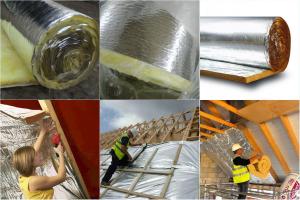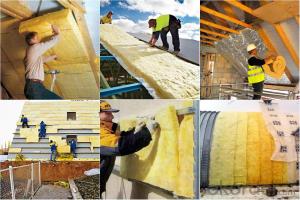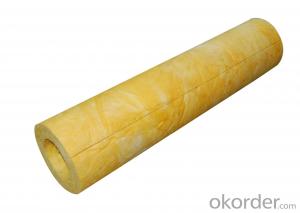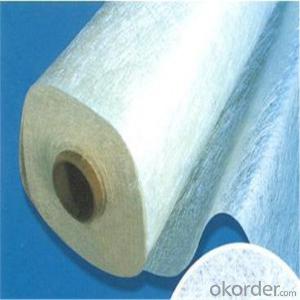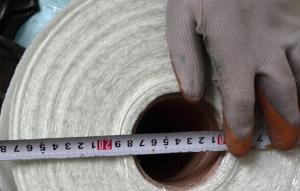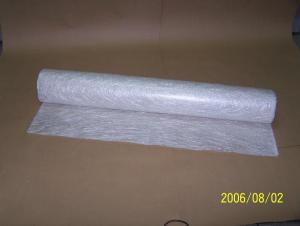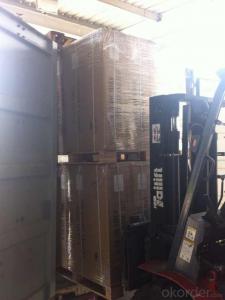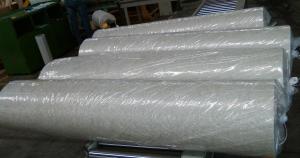Fiberglass Mat Tissue Chopped Strands for Thermoplastic
- Loading Port:
- Shanghai
- Payment Terms:
- TT or LC
- Min Order Qty:
- 20000 kg
- Supply Capability:
- 1000000Kg Per Month kg/month
OKorder Service Pledge
OKorder Financial Service
You Might Also Like
1.Brief Introduction
Chopped Stands for Thermoplastic are based on silane coupling agent and special sizing formulation, compatible with PA,PBT/PET, PP, AS/ABS, PC, PPS/PPO,POM, LCP;
2.Product Features
Extremely low resin demand, delivering low viscosity to BMC paste
High impact strength; High LOI rate
High strand stiffness; Compatible with rubber
3.Product Specifications
Property | Fibre diameter | Moisture Content | Size Content | Chop |
(%) | (%) | (%) | (%) | |
Mathods | IS01888 | ISO3344 | ISO1887 | |
3mm | ±10 | ≤3.0 | 0.1±0.05 | 98 |
6mm | ||||
9mm | ||||
12mm |
Special specification can be produce according to customer requirements.
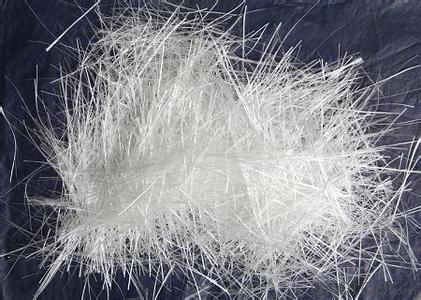
4.FAQ
Packaging:
Each bag can be taken (15-25kgs). Could also take a big container bag.
Storage:
Unless otherwise specified, It should be stored in a dry, cool and rain-proof area. It is recommended that the room temperature and humidity should be always maintained at 15℃~35℃ and 35%~65% respectively.
- Q: What is the moisture resistance rating of fiberglass mat tissue?
- The moisture resistance rating of fiberglass mat tissue may differ depending on the specific product and manufacturer. Nonetheless, fiberglass mat tissue is renowned for its exceptional moisture resistance properties. It is typically engineered to exhibit high resistance against water absorption, rendering it suitable for applications where moisture exposure is a concern. This moisture resistance attribute aids in preserving the structural integrity and performance of the fiberglass mat tissue, even under humid or wet conditions. It is crucial to consider the manufacturer's provided product specifications to ascertain the precise moisture resistance rating when selecting fiberglass mat tissue for a particular application.
- Q: Are there any health risks associated with fiberglass mat tissue?
- Fiberglass mat tissue poses potential health risks indeed. Its composition consists of minuscule glass fibers that can be released into the air when the material is cut, sanded, or disturbed. Inhaling these fibers can lead to skin, eye, and respiratory irritation. Immediate exposure may cause coughing, wheezing, and breathing difficulties. Prolonged exposure to fiberglass fibers has been associated with severe health complications, including lung damage and an elevated likelihood of developing respiratory conditions like asthma or bronchitis. To mitigate exposure and potential health issues, it is crucial to adhere to proper precautions, such as wearing protective clothing, goggles, and a mask when handling fiberglass mat tissue.
- Q: Is fiberglass mat tissue suitable for electrical insulation applications?
- Fiberglass mat tissue proves to be a fitting choice for electrical insulation purposes. Comprised of glass fibers intricately fused with resin, it yields a robust and long-lasting substance. Its remarkable electrical insulation traits, including a high dielectric strength and low electrical conductivity, render it perfect for situations necessitating electrical insulation, like those found in transformers, motors, and electrical switchgear. Furthermore, the added resistance to moisture, chemicals, and heat amplifies its aptness for electrical insulation applications.
- Q: How is fiberglass mat tissue used in the production of composite panels?
- Fiberglass mat tissue is commonly used in the production of composite panels due to its unique properties and versatility. It serves as a reinforcement material that helps enhance the strength, durability, and overall performance of the composite panels. In the production process, fiberglass mat tissue is typically sandwiched between layers of resin to create a composite structure. The tissue acts as a reinforcing layer, providing additional strength and stability to the panels. It helps distribute the stress applied to the panel evenly, reducing the risk of cracks or fractures. One of the key advantages of using fiberglass mat tissue is its ability to improve the impact resistance of composite panels. The tissue absorbs and disperses energy when subjected to external forces, minimizing the risk of damage or breakage. This makes it an ideal choice for applications that require high impact resistance, such as automotive parts, boat hulls, or aircraft components. Fiberglass mat tissue also offers excellent corrosion resistance, making it suitable for use in environments with high humidity or exposure to chemicals. It acts as a barrier that protects the composite panels from moisture and corrosive substances, extending their lifespan and ensuring their long-term performance. Additionally, fiberglass mat tissue is highly moldable, allowing for the creation of complex shapes and designs. It can be easily molded into various forms, providing flexibility in the production process and enabling the creation of customized composite panels for specific applications. Overall, fiberglass mat tissue plays a crucial role in the production of composite panels by reinforcing the structure, enhancing impact resistance, improving corrosion resistance, and enabling flexibility in design. Its unique properties make it a popular choice in industries such as construction, transportation, aerospace, and marine, where high-performance and durable composite panels are required.
- Q: Can fiberglass mat tissue be used for marine applications?
- Yes, fiberglass mat tissue can be used for marine applications. Fiberglass mat tissue is commonly used in the marine industry for various purposes such as boat construction, repairs, and maintenance. It provides excellent strength, durability, and resistance to water, making it an ideal material for marine applications. Fiberglass mat tissue is lightweight, easy to work with, and can be easily molded or shaped to fit specific requirements. It is also resistant to corrosion from saltwater and other harsh marine environments. Overall, fiberglass mat tissue is a reliable and versatile material that is commonly used in the marine industry.
- Q: How is fiberglass mat tissue manufactured?
- The production of fiberglass mat tissue is accomplished by utilizing glass fibers and a binder material in a multi-step procedure. Firstly, glass fibers are manufactured by melting raw materials like silica sand, limestone, and soda ash in a furnace. The molten glass is then forced through small holes in a spinneret, resulting in the creation of fine strands of glass fibers. Once the glass fibers are generated, they are gathered and formed into a continuous mat. This is achieved by passing the fibers through a sequence of rollers or air jets that align and compress them into a uniform sheet. At this stage, the mat retains a loose and fragile structure. To provide the fiberglass mat tissue with strength and stability, a binder material is introduced. This binder can be a resin or a mixture of resins and additives. Typically, the binder is sprayed onto the mat, allowing it to permeate and bond with the glass fibers. This process is referred to as wet-laid manufacturing. Following the application of the binder, the fiberglass mat tissue undergoes a curing process. Depending on the specific requirements of the product, this may involve the application of heat, pressure, or both. The purpose of the curing process is to solidify the binder and ensure a secure bond with the glass fibers, resulting in a robust and long-lasting mat. Once the curing process is completed, excess moisture is removed from the fiberglass mat tissue through drying. It is then trimmed and cut to the desired dimensions. Depending on its intended use, the mat may undergo further treatments like surface coatings or laminations to enhance its performance properties. In summary, the manufacturing process of fiberglass mat tissue encompasses the production of glass fibers, the formation of a continuous mat, the addition of a binder material, curing, drying, and final processing. This comprehensive procedure guarantees that the resulting fiberglass mat tissue possesses strength, flexibility, and suitability for a diverse range of applications such as insulation, reinforcement in composites, or roofing materials.
- Q: What is the delamination strength of fiberglass mat tissue?
- The delamination strength of fiberglass mat tissue refers to its ability to resist separation or peeling of layers within the material. It is a measure of the adhesive strength between the fibers and the binder in the mat. The specific delamination strength of fiberglass mat tissue can vary depending on factors such as the manufacturing process, binder type, and overall composition of the material.
- Q: Can fiberglass mat tissue be used for reinforcing swimming pools?
- Swimming pools can be reinforced with fiberglass mat tissue, a robust and enduring material widely employed in diverse construction projects. This lightweight and flexible material is highly resistant to water, chemicals, and corrosion, making it an excellent option for reinforcing swimming pool structures. To apply the fiberglass mat tissue, it is typically affixed to the pool surface using a resin-based adhesive, resulting in a powerful bond that enhances the pool's strength and stability. Furthermore, the use of fiberglass mat tissue can effectively deter cracking and increase the lifespan of the swimming pool, rendering it a favored choice among pool builders and owners.
- Q: Can fiberglass mat tissue be used for repairing fiberglass surfboards?
- Yes, fiberglass mat tissue can be used for repairing fiberglass surfboards. Fiberglass mat tissue is a commonly used material for repairing and reinforcing fiberglass structures, including surfboards. It is lightweight, flexible, and easy to work with, making it ideal for patching up cracks or holes in the surfboard's fiberglass shell. The mat tissue is typically applied with epoxy resin, which bonds the tissue to the surfboard's surface, creating a strong and durable repair. However, it is important to note that the success of the repair depends on the skill and technique of the person performing it. It is recommended to seek professional help or guidance if you are not experienced in surfboard repairs.
- Q: How does the width and length of fiberglass mat tissue affect its application?
- Various aspects of fiberglass mat tissue application can be greatly influenced by its width and length. The width of the mat tissue has a significant impact on both coverage area and ease of installation. A wider mat tissue can cover a larger surface area, reducing the number of individual sheets needed for a project. This can result in time and effort savings, particularly for large-scale applications. Moreover, the width of the mat tissue can also affect the overall strength and durability of the final product. A wider mat tissue provides greater reinforcement, making it suitable for applications that require enhanced strength and stability. For instance, it can be utilized in the construction of structural components or high-stress areas. On the other hand, the length of the mat tissue affects convenience and flexibility during installation. Longer rolls of mat tissue enable continuous installation without the need for frequent seams or joints. This advantage is particularly valuable when working on substantial projects, as it minimizes potential weak points and enhances the overall integrity of the fiberglass application. Furthermore, the length of the mat tissue also impacts the ease of handling and transportation. Longer rolls can pose challenges in terms of maneuverability and transport, especially in confined spaces or through narrow doorways. Consequently, it is crucial to consider the length based on the accessibility and logistics of the specific application site. To summarize, both the width and length of fiberglass mat tissue play vital roles in its application. The width influences coverage area, strength, and durability, while the length affects convenience, flexibility, and handling during installation. Taking these factors into account enables a more efficient and successful application of fiberglass mat tissue across various industries and projects.
Send your message to us
Fiberglass Mat Tissue Chopped Strands for Thermoplastic
- Loading Port:
- Shanghai
- Payment Terms:
- TT or LC
- Min Order Qty:
- 20000 kg
- Supply Capability:
- 1000000Kg Per Month kg/month
OKorder Service Pledge
OKorder Financial Service
Similar products
Hot products
Hot Searches
Related keywords
